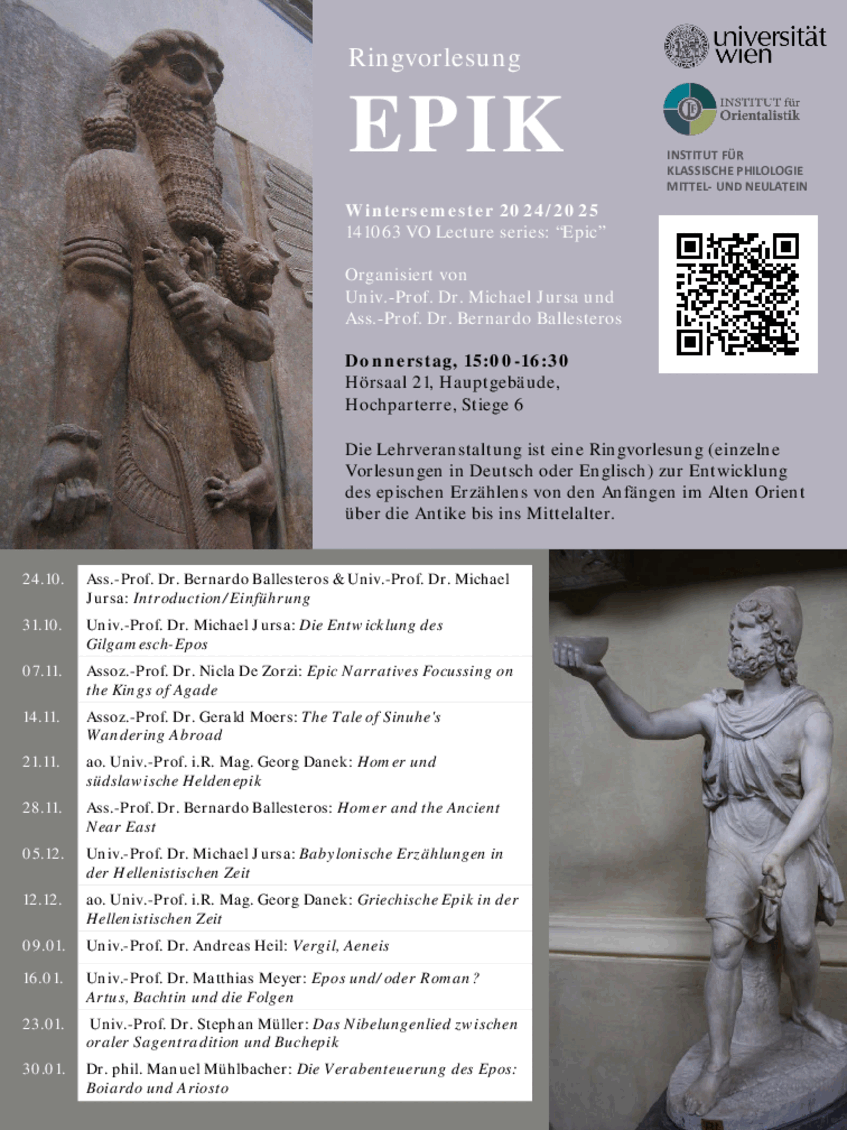Ringvorlesung: Epik
Wintersemester 2024/2025
141063 VO Lecture series: “Epic”
Donnerstag, 15:00 16:30
Hörsaal 21, Hauptgebäude, Hochparterre, Stiege 6
Organisiert von Univ. Prof. Dr. Michael Jursa und
Ass. Prof. Dr. Bernardo Ballesteros
Die Lehrveranstaltung ist eine Ringvorlesung (einzelne Vorlesungen in Deutsch oder Englisch) zur Entwicklung des epischen Erzählens von den Anfängen im Alten Orient über die Antike bis ins Mittelalter.

Vorlesungsprogramm
- 24.10.2024
Bernardo Ballesteros and Michael Jursa
Introduction/Einführung
- 31.10.2024
Michael Jursa
Die Entwicklung des Gilgamesch-Epos 1
- 7.11.2024
Nicla De Zorzi
Epic Narratives Focussing on the Kings of Agade
- 14.11.2024
Gerald Moers
The Tale of Sinuhe's Wandering Abroad
- 21.11.2024
Georg Danek
Homer und südslawische Heldenepik
- 28.11.2024
Bernardo Ballesteros
Homer and the Ancient Near East
- 5.12.2024
Michael Jursa
Babylonische Erzählungen in der Hellenistischen Zeit
- 12.12.2024
Georg Danek
Griechische Epik in der Hellenistischen Zeit
- 9.1.2024
Andreas Heil
Vergil, Aeneis
- 16.1.2024
Matthias Meyer
Epos und/oder Roman? Artus, Bachtin und die Folgen
- 23.1.2024
Stephan Müller
Das Nibelungenlied zwischen oraler Sagentradition und Buchepik
- 30.1.2024
Manuel Mühlbacher
Die Verabenteuerung des Epos: Boiardo und Ariosto
